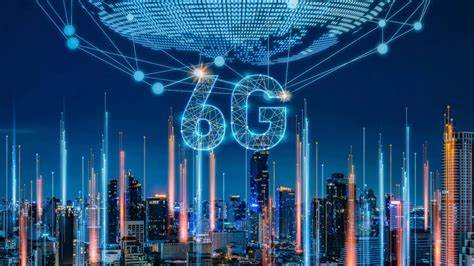As the world continues to adapt rapidly to new technological advancements, the horizon of wireless communication is already shifting towards 6G networks. Promising to revolutionize the way we connect and interact with technology, 6G represents the next leap beyond the existing 5G infrastructure. While 5G is still being rolled out globally, researchers and industry leaders are already envisioning the transformative potential of 6G — a network that could redefine the future of tech across multiple sectors.
What is 6G?
6G, or sixth-generation wireless technology, is expected to be the successor to 5G networks, providing significantly faster data speeds, ultra-low latency, and enhanced connectivity capabilities. Experts anticipate 6G will deliver peak data rates exceeding 1 terabit per second (Tbps), which is roughly 100 times faster than the peak speeds of 5G networks today. Along with speed, 6G aims to provide near-zero latency, meaning data transmission will occur almost instantaneously, enabling real-time applications that are currently impossible.
How Will 6G Impact Technology?
The introduction of 6G is set to impact various facets of technology and everyday life profoundly. Here are some of the key areas where 6G is expected to make a difference:
1. Transforming the Internet of Things (IoT) and the development of smart cities
With billions of devices already connected worldwide, the IoT ecosystem is rapidly expanding. 6G networks will provide the bandwidth and speed required to support massive IoT deployments, allowing smart cities to function more efficiently. From traffic management and environmental monitoring to energy usage and public safety, 6G will facilitate smarter urban infrastructures with seamless device communication.
2. Advancing Augmented Reality (AR) and Virtual Reality (VR)
While 5G has paved the way for improved AR and VR experiences, 6G is expected to push the boundaries further by enabling fully immersive, high-fidelity virtual environments. This will open doors for revolutionary applications in gaming, remote work, education, and virtual tourism, offering users experiences indistinguishable from reality.
3. Empowering Artificial Intelligence (AI) and Edge Computing
6G’s ultra-fast data transfer and low latency will enhance AI capabilities by enabling real-time data processing closer to the source, known as edge computing. This means AI systems can respond instantaneously to dynamic environments, crucial for applications such as autonomous vehicles, robotics, and healthcare diagnostics.
4. Enabling Advanced Healthcare Solutions
Telemedicine and remote surgery are expected to benefit immensely from 6G. The network’s reliability and speed will allow doctors to perform surgeries remotely with robotic instruments, providing expert care in real-time to patients in even the most remote locations. Furthermore, continuous monitoring of patient health through connected wearable devices will become more sophisticated and accurate.
When Can We Expect 6G?
Although the commercial rollout of 6G is not expected until around 2030, research and development are already underway globally. Countries like China, South Korea, Japan, and the United States are heavily investing in 6G technology, aiming to secure leadership in the next wave of wireless innovation.
Challenges Ahead
Despite its promising potential, 6G also faces significant challenges. The infrastructure needed to support such high speeds and connectivity is complex and costly. Additionally, the network will rely on new frequency spectrums, including terahertz (THz) bands, which require advanced materials and engineering solutions to overcome limitations like signal attenuation.
Security and privacy concerns will also be critical. With more devices interconnected and transmitting sensitive data, robust encryption and cybersecurity measures will be essential to protect users.
Conclusion
6G networks signify a groundbreaking advancement in the field of wireless communication technology. By offering unprecedented speed, connectivity, and intelligence, 6G promises to transform not just how we communicate but how we live, work, and interact with the world around us. From smarter cities to groundbreaking healthcare innovations, the future shaped by 6G is one of limitless possibilities. While it may still be years away, the ongoing advancements in this field make it clear that 6G will be a cornerstone of the next technological revolution.





